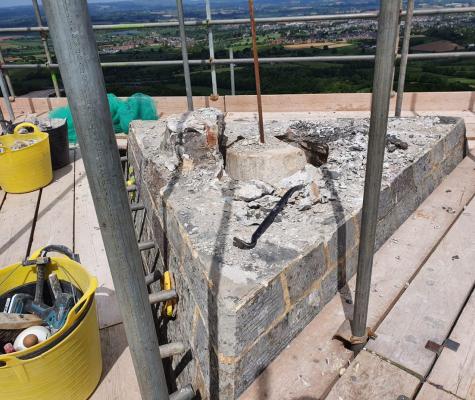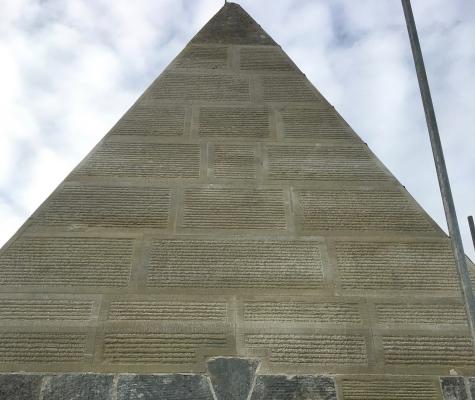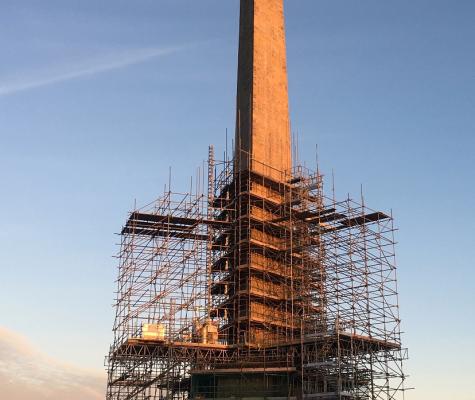Wellington Monument, Somerset, is the tallest three-sided obelisk in the world and an incredibly important local landmark. However, its condition had deteriorated since the last programme of repairs in the 1980s and it had been fenced off for public safety for more than 15 years. One of the biggest areas of concern was the pyramidion; the very peak of the structure. The National Trust has looked after the site since 1934 and has undertaken several major repairs. However, water ingress, the exposed nature of the site and failure of some previous repairs were all contributing factors to the fencing off and closing of the internal staircase.
The damage was clearly visible with numerous large cracks, bulges, holes and fallen masonry. The building needed urgent
and significant repair. During the project there has been a huge amount of local interest and visitors to the site have increased significantly. The local community take a great deal of pride and ownership of the site and have been vital to raise funds for the wider project. They have shared their stories of just why the monument is so important to the local area. Once the work is completed on all elements, the fence surrounding the monument will be removed and people will once again be able to climb to the top and see the incredible views.
The monument was built following the Duke of Wellington’s success at Waterloo in 1815 (the Duke having taken his title from the
town of Wellington). It was funded through local subscription but cash soon ran out and it sat unfinished until the Duke’s death
in 1852. It wasn’t finally completed to its current height of 175 feet until the 1890s. The small size of the pyramidion stonesmeant more joints for water to get in. This water was able to run through the monument washing out mortar and leaving
holes behind the front-facing stones. The funding from Valencia Communities Fund was vital in removing the existing pyramidion and
replacing it with a new design of larger stone that tessellate to greatly reduce water ingress. It was a huge task that required a
crane to both bring down the old stone and then take back up the replacement stone. Each stone was cut precisely to size and
then expertly placed and secured by the team of masons.
Further works funded by Valencia Communities Fund were some of the corner stones or ‘quoins’ and stone replacement just beneath the pyramidion.


